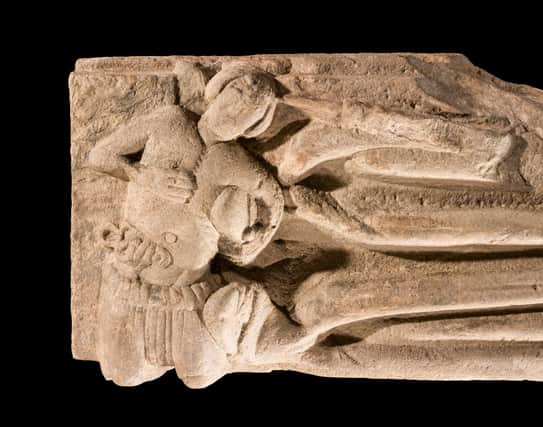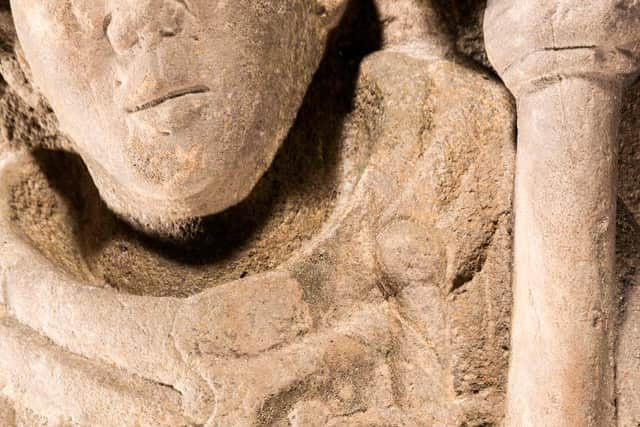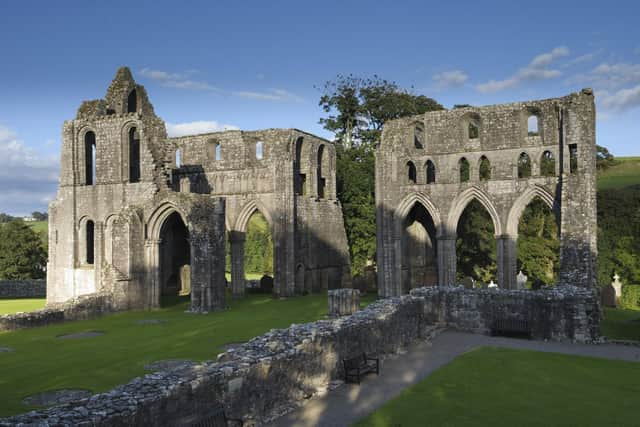13th Century carving records 'abbot's assassination' at Scottish abbey


Restoration of the piece from Dundrennan Abbey in Dumfries and Galloway now clearly shows the figure of an abbot complete with a dagger on his chest.
A second, smaller figure at the abbot’s feet is depicted with a gash wound and hanging entrails.
Advertisement
Hide AdAdvertisement
Hide AdArchaeologist Adrian Cox said the carving may record the assassination of an abbot at Dundrennan, which was founded in the 12th Century by an austere order of Cisterian monks.


Mr Cox, formerly of the cultural resources team at Historic Environment Scotland, said: “It seems possible that this memorial commemorates an abbot of Dundrennan who was wounded or assassinated.
"The small figure at his feet likely represents his assailant. The symbolism is rather poignant, the scene depicting the abbot as triumphant over his assailant in perpetuity.”
In the carving, the abbot is wearing his monastic habit and holds in his left hand a long staff – or crosier – across his body in a show of status.


His right hand is placed over his chest, and a small dagger is shown alongside, penetrating his chest.
At the abbot’s feet lies a small figure wounded by a large gash below the waist. The entrails of the man can be seen spilling out below his navel with the pointed end of the abbot’s crosier resting on his head.
Few records from monastic life at Dundrennan survive with the identity of the abbot unknown.
The carving would originally have covered a tomb chest and is one of number to be recently conserved at the abbey, which sits in a valley around five miles from Kirkcudbright.
Advertisement
Hide AdAdvertisement
Hide AdMary Queen of Scots is reputed to have spent her last night on Scottish soil in the commendator’s lodgings in Dundrennan before leaving for England in a boat at Abbey Burn Foot following the disastrous Battle of Langside in May 1568.
But before the ill-fated queen sought refuge here, it was home to a Cistercian order for more than 400 years.
Accounts from an Italian merchant in the late 13th Century detail Dundrennan, which also featured a stable and orchard, as being one of the best monasteries for wool production in Scotland.
In 1296, Abbot Walter and the convent swear fealty to Edward I of England at the outset of the Wars of Independence.
Within three years, the monks seek £8000 compensation from the king for losses incurred during his invasions, including a plea to return 8½ sacks of ‘good wool’ taken by his army.
By 1560, the Reformation brings monastic life to an end at Dundrennan with the abbey falling into disrepair. Large parts of the building can still be seen, however, including the chapterhouse which was once covered by a spectacularly carved vaulted roof.
HES said that, given both its setting and quality of its architecture, Dundrennan Abbey is widely acknowledged as one of Scotland’s most beautiful monastic ruins.
Today, the abbey church is occasionally the focus of informal worship. Recently, a party of Polish Cistercian monks visited and held an impromptu act of worship in the abbey nave.
